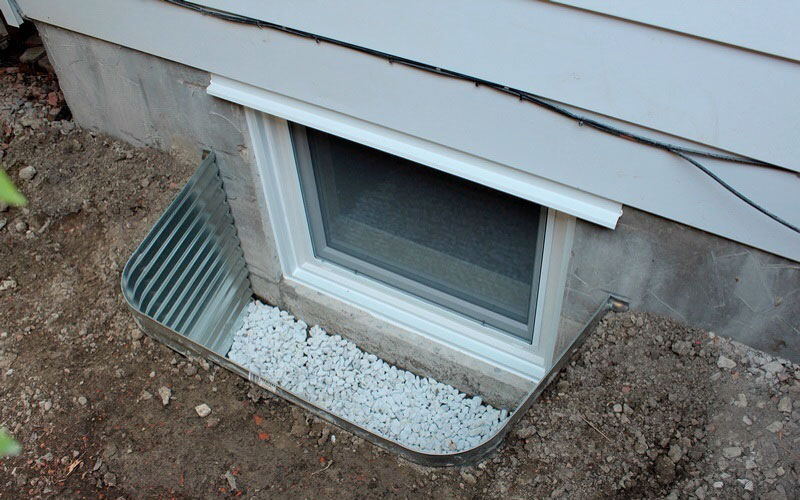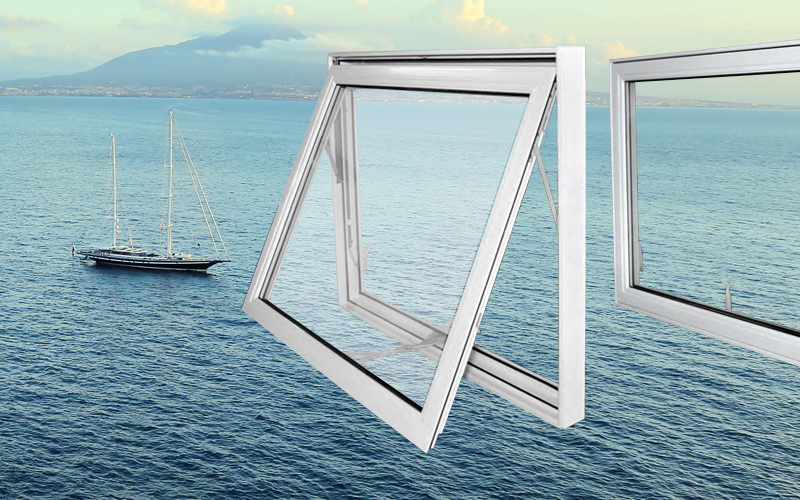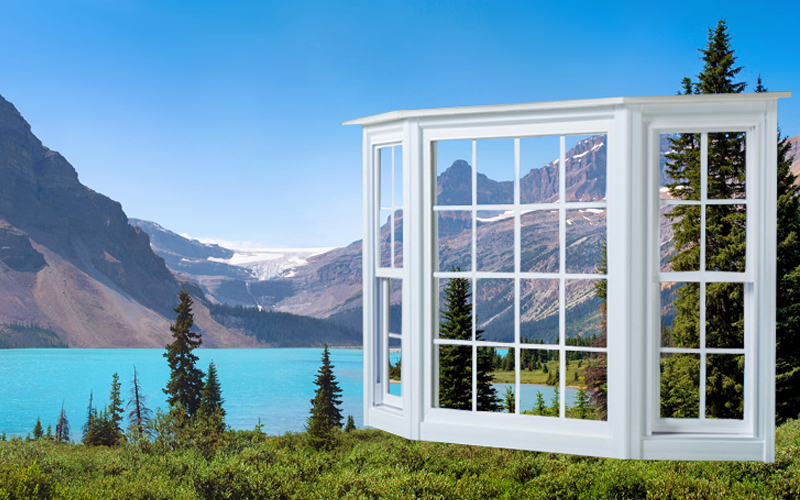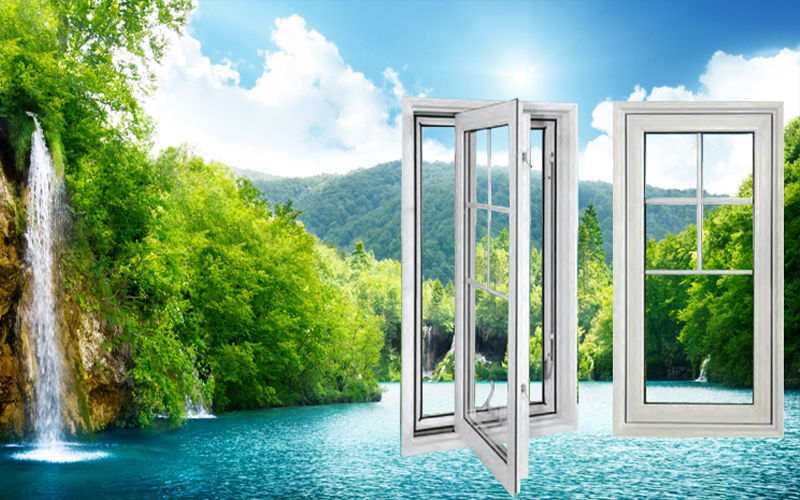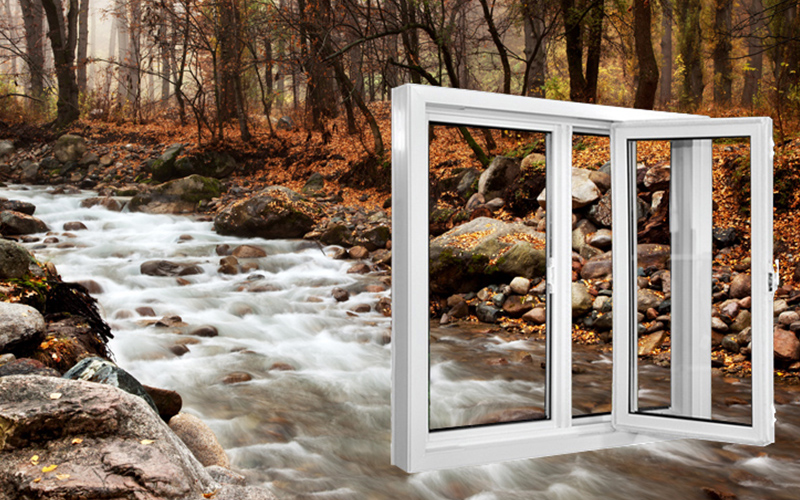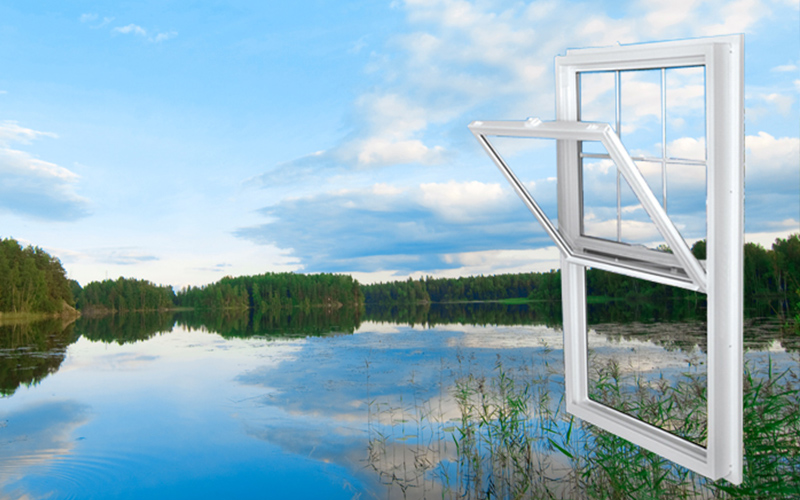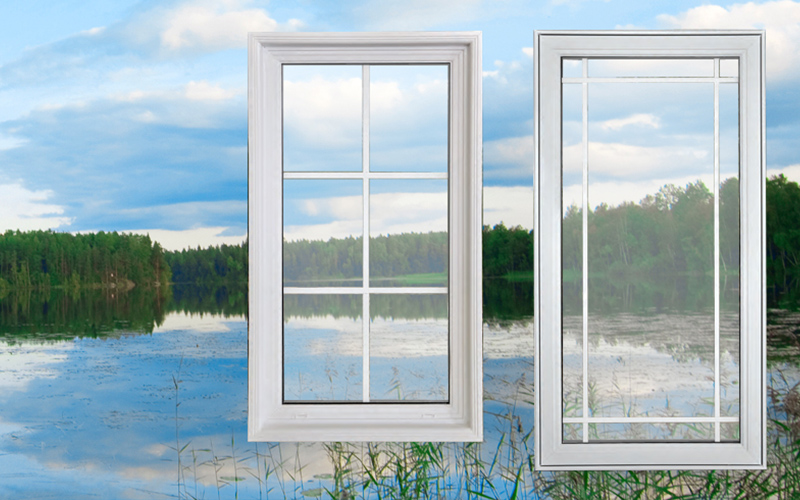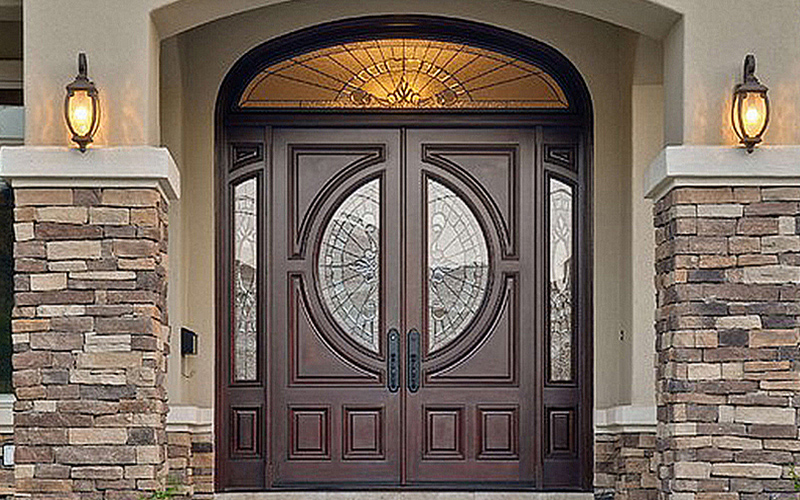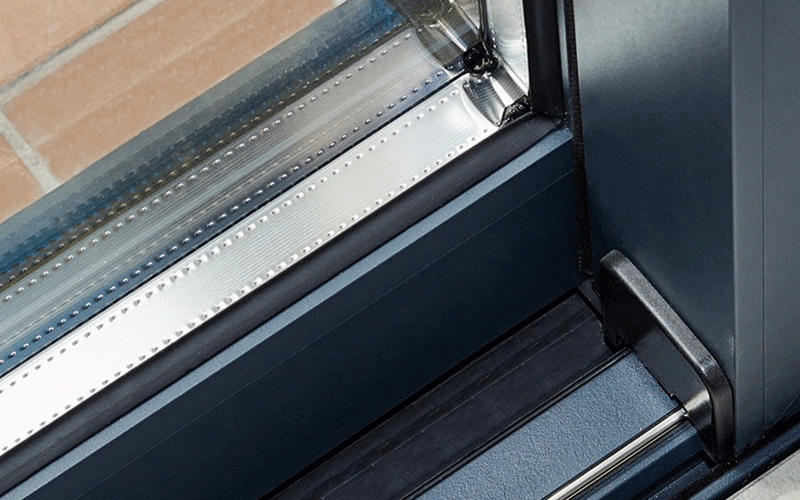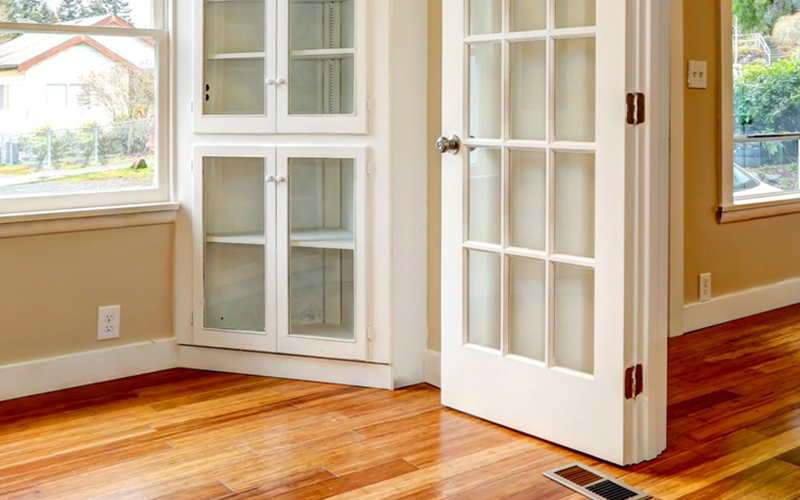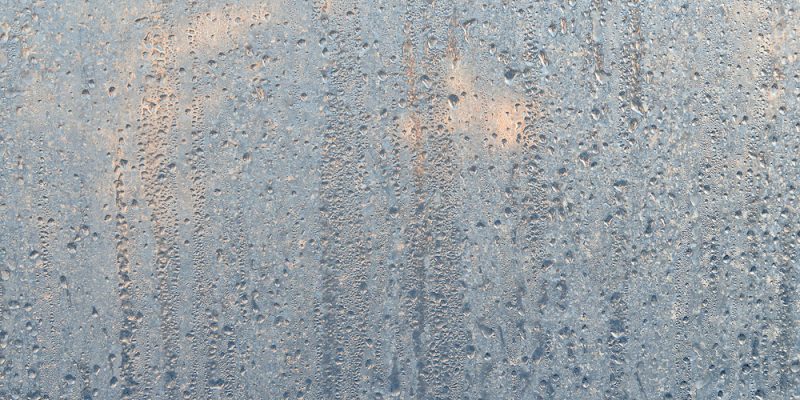As soon as heating season begins you may notice some condensation on your windows. It can be something small – just around the glass edges, or something big – covering up a large portion of the entire glass and leaking down on your window sills and walls. Before you start blaming your old or new windows for it, let’s cover the basics of condensation.
The definition of Condensation – “the process by which vapor in the air changed into liquid water” (wikipedia). Air inside your house has some percentage of vapor. Once this air cools down to dew point (“the temperature at which the water vapor in a sample of air at constant barometric pressure condenses into liquid water at the same rate at which it evaporates” wikipedia), vapor will condensate into liquid water. For example, if your room temperature is about 21 deg C and the relative humidity is at 35% you will see condensation on any object that has a temperature of about 4 deg C or lower. For other examples you can refer to Dew Point calculation chart below.
Now that we can calculate the dew point, it might be worth your while to invest $5-$10 in to humidity meter. This will take away all your guessing of the humidity levels in your house. Even if you have or don’t have a humidifier, an independent meter that you can use in any room is well worth it. Once you have an independent humidity meter, you can start using the following table as a guideline for the amount of humidity you should have in the house according to the outside temperature. Please note, that this table is a GUIDELINE! “Standard window” means a lot of different things to people as well as “high-performance window”.
|
Outside Temperature in Degrees Celsius |
Standard Window |
High Performance Window |
|
0 |
40% |
50% |
|
-10 |
30% |
40% |
|
-20 |
20% |
30% |
|
-30 |
15% |
25% |
|
-40 |
10% |
20% |
At this point, you should have a pretty good idea if the humidity in your house is very close to recommended levels or not. If your answer is “YES, it is close to or below” and you still have excessive condensation it may mean that your windows are just not that efficient or have poor ventilation (covered up with blinds or drapes, closed or lack of air ducts under windows, and so on). But if your answer is “NO, humidity levels are higher than recommended”, then all you have do is to lower your humidity.
If you answered “Yes, my humidity is very close or below recommended level” and you still have excessive condensation you can do the following things:
- Make sure that your windows have enough airflow. There is a reason why there are venting ducts under neath most windows. Keep them open and unobstructed. if you have window coverings, open them up to allow air circulation, especially at night time. Temperature usually drops quite a bit at night and cools the windows a lot more.
- If your thermostat set to lower heating temperature at night, and the outside temperature is usually much colder at night, your humidity needs to be adjusted for that temperature as well. Calgary in particular, has huge and fast temperature swings. This makes it a lot harder to keep up proper humidity levels indoors.
- If you still feel that your windows are just not that great, consult with a professional.
If you answered “No, my humidity levels are higher than recommended level” then you are up for exploring your home, your habits, furnace, humidifier, and others that live with you:
- If you have a humidifier – turn it down or off completely.
- Make sure that you turn on exhaust fan when using the shower, brushing teeth and so on.
- Make sure that you turn on hood fan when cooking.
- Close the lids on cooking pots and pans.
- Do not dry your clothes inside your home. Use drying machine that vents to the outside.
- Air-rate your home. Open windows for 10-20 min to allow fresh air in and excessive humidity out.
- Make sure that your attic vents are open and there is proper air circulation.
- If you have a lot of plants – well, they need and produce moisture. Reducing the amount of plants might be considered.
- Check your basement – it might be damp, ground water seeping in… Run dehumidifier if necessary.
- Recent renovation – new building materials (wood, cement, drywall, pain) contain a lot of moisture. It may take a few heating seasons to stabilize their moisture levels.
Majority of people have been able to eliminate all window condensation using the simple measures above. However, there are always exceptions as well as many other factors that do effect humidity and condensation levels on the windows. In this case, you should consider talking to a certified home inspector and perform further analysis.


